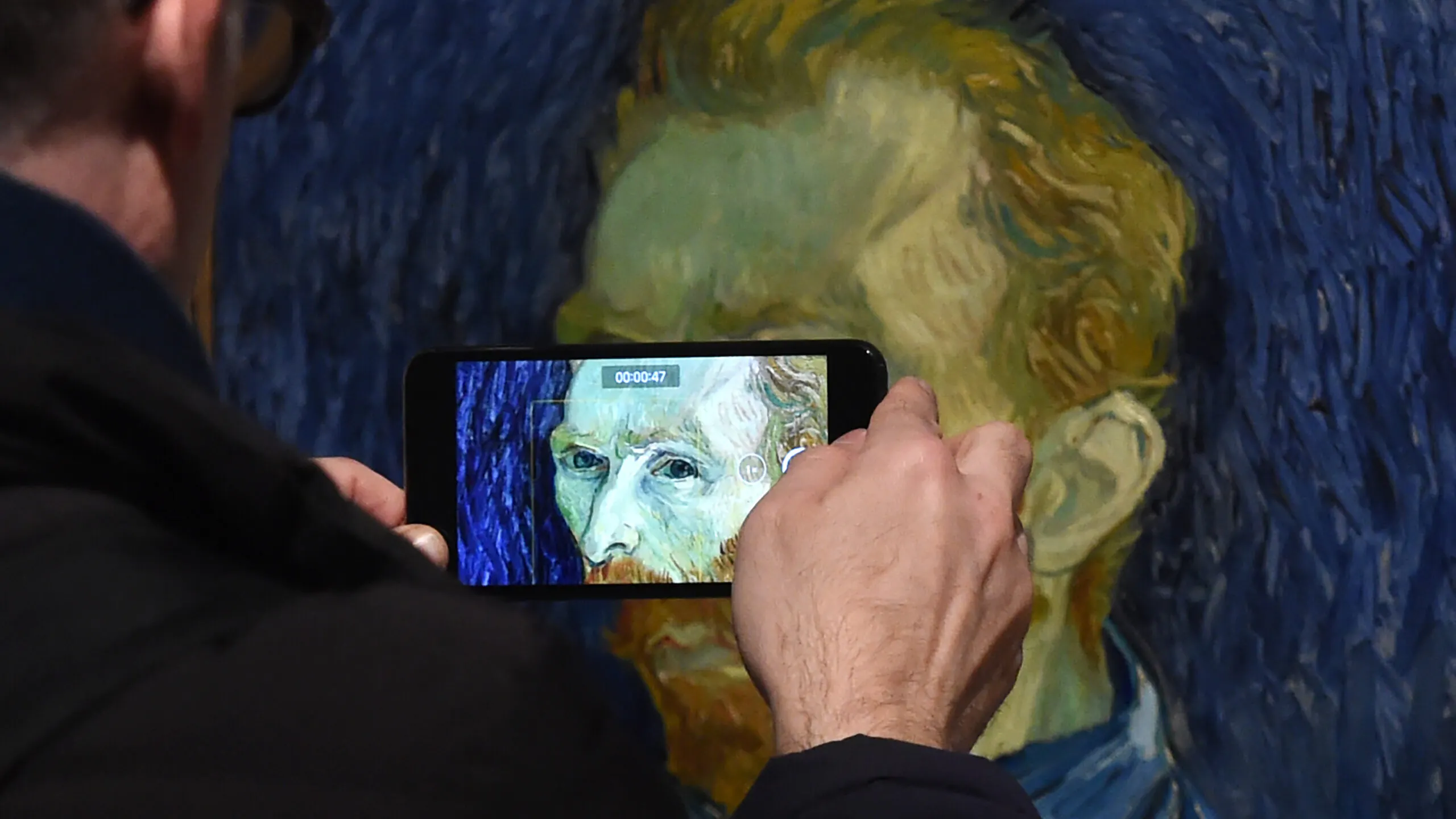A never-before-seen self-portrait of Vincent Van Gogh has been discovered behind another of the famous artist’s paintings, a Scottish museum announced.
The self-portrait of the tortured master was found on the back of his “Head of a Peasant Woman” when experts at the National Galleries of Scotland’s Edinburgh gallery took an x-ray of the canvas. The work had been hidden for over a century behind layers of glue and cardboard when it was framed.
“Moments like this are incredibly rare,” said Frances Fowle, a senior curator at the National Galleries of Scotland. “We have discovered an unknown work by Vincent Van Gogh, one of the most important and popular artists in the world.”

X-ray image of Vincent Van Gogh’s self-portrait.
(GRAEME YULE/NATIONAL GALLERIES OF SCOTLAND)
Van Gogh, who died penniless and famously lopped off his own ear during a fight with a friend, often painted on both sides of the canvas. The newly discovered self-portrait shows him bearded, wearing a loose neckerchief and sporting a wide-brimmed hat. Experts agreed there is no doubt it was a self-portrait, and likely from an early period of his career.
Van Gogh painted “The Head of a Peasant Woman” in 1885, three years before he sliced off his left ear.
Art experts are trying to figure out how to delicately remove the glue and cardboard without harming “Head of a Peasant Woman.”

Vincent van Gogh: The Head of a Peasant Woman, 1885.
ANTONIA REEVE/NATIONAL GALLERIES OF SCOTLAND
“When we saw the x-ray for the first time of course we were hugely excited,” senior paintings conservator Lesley Stevenson said in a video shared by National Galleries of Scotland. “Such a major discovery happens once, twice in a conservator’s lifetime… To have an image, as elusive as it presently is, is something very, very special.”
Visitors to an exhibit set for July 30-November 13 at the Royal Scottish Academy in Edinburgh will be able to view an X-ray image of the self-portrait through a lightbox.

.png)
.png)

